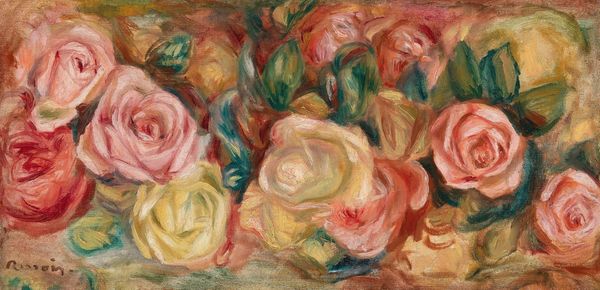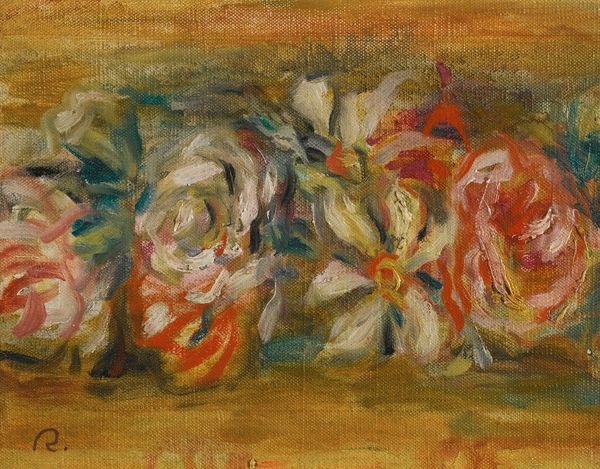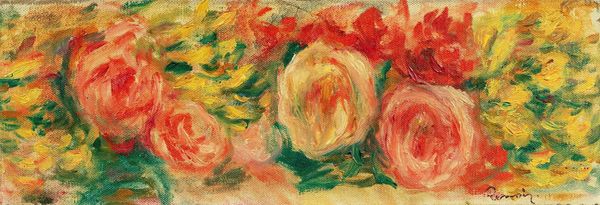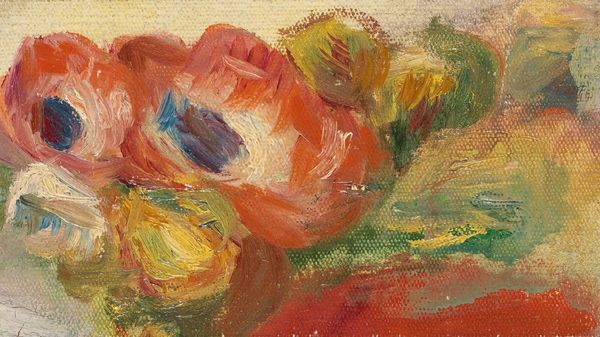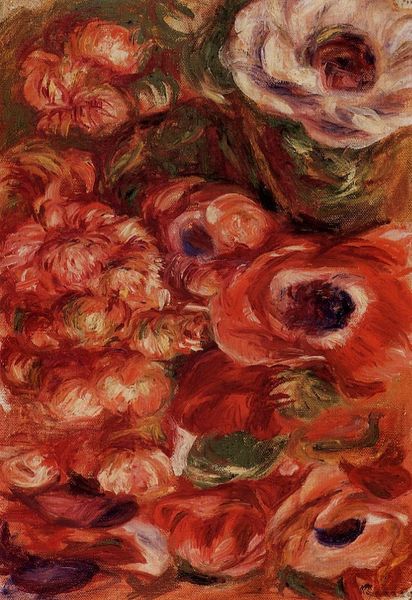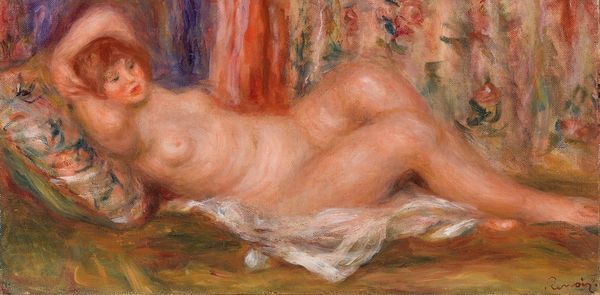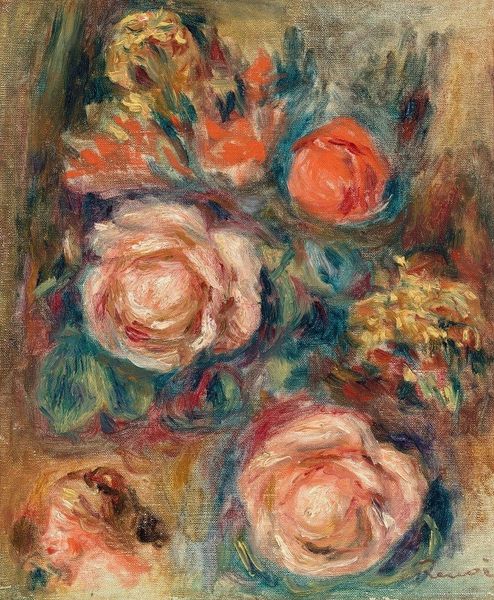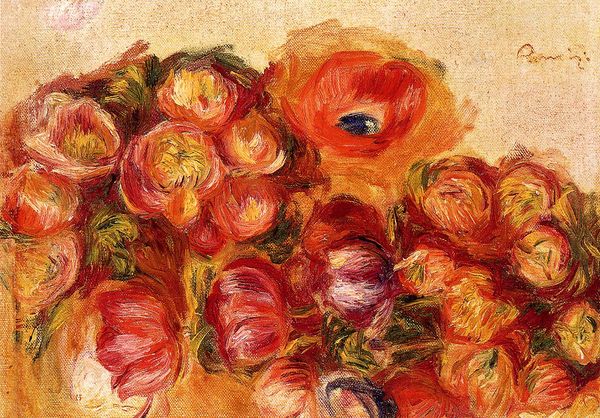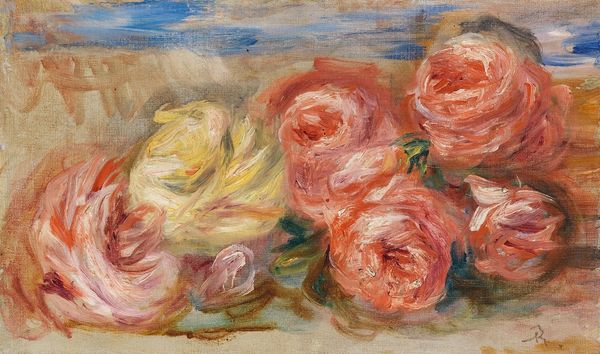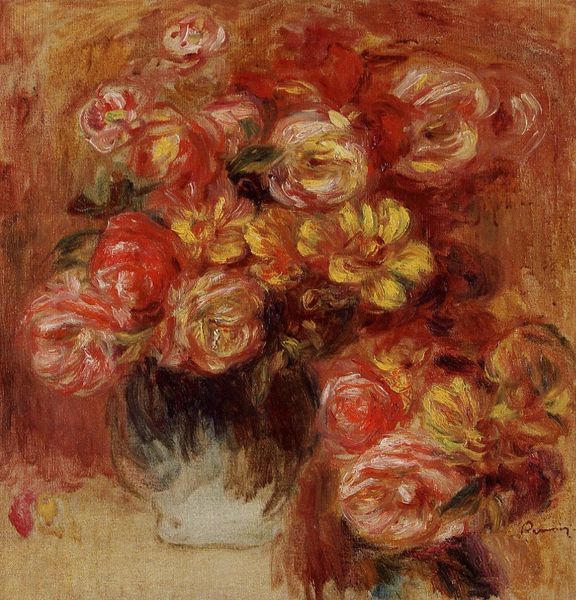
Copyright: Public Domain: Artvee
Editor: This is Renoir's "Roses Et Étude De Gabrielle," painted in 1915. It's oil on canvas. I’m struck by the contrast between the very defined, almost robust forms of the roses, and the more indistinct shape of the woman. What do you see as the most important elements in this composition? Curator: Formally, it's intriguing. Consider the use of impasto – observe how the thickly applied paint gives the roses a sculptural presence, contrasting with the smoother, almost blurred treatment of the figure. Note, too, how the colour palette creates connections between figure and flora: The rosy tones in Gabrielle’s skin mirror the intense hues of the blooms. Editor: So, the textures and color create a dialogue, despite the different levels of detail? Curator: Precisely. The texture of the paint itself is crucial to our interpretation. Renoir prioritizes surface and sensation. The woman and roses aren't necessarily figures within a realistic space, but rather subjects presented through the application of pigment. Does the visible brushwork detract or enhance our viewing experience? Editor: I think it enhances it, because you become more aware of the painting as a constructed object and not a picture of reality. Curator: Indeed. One could further suggest that Renoir seems most concerned with an arrangement of forms, a construction where colour and texture preside supreme. It shows how brushstrokes are built and related, emphasizing abstract relations of light and volume, line and mass. Editor: That emphasis on the relationship between the brushstrokes and composition definitely offers a new way to appreciate this piece, by focusing on its material construction rather than the narrative of its subjects. Curator: Agreed. By examining these elements, we unlock a deeper understanding of Renoir's aesthetic intentions and stylistic innovations.
Comments
No comments
Be the first to comment and join the conversation on the ultimate creative platform.
